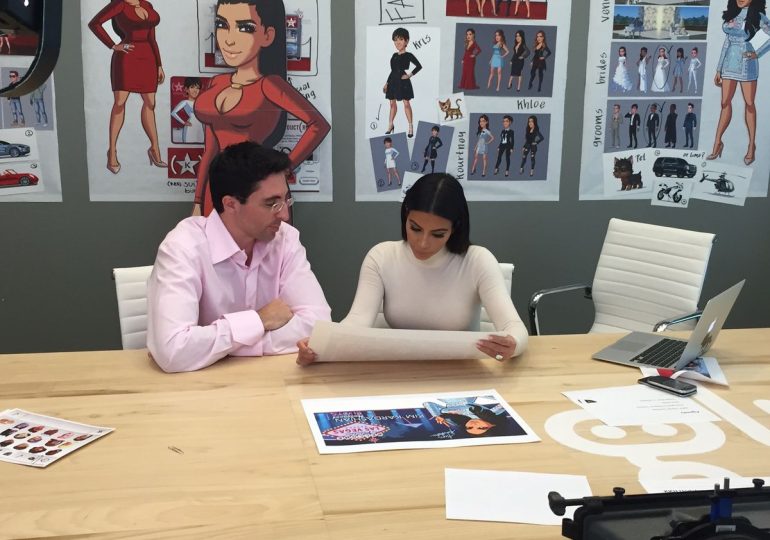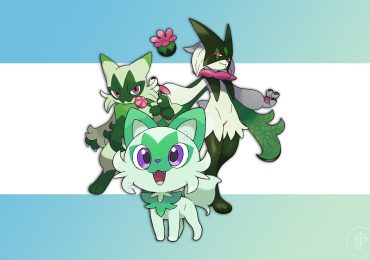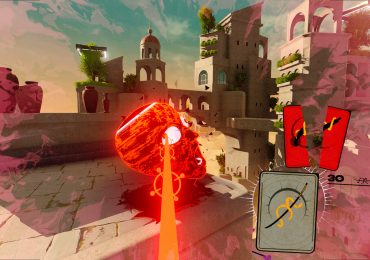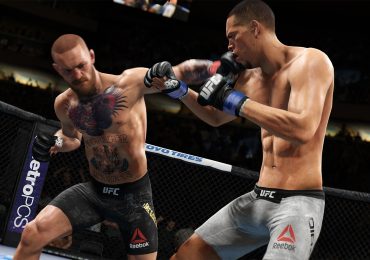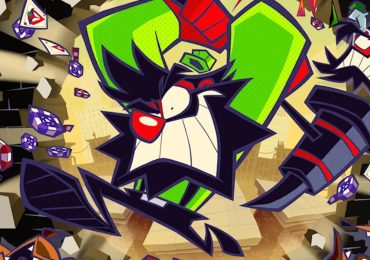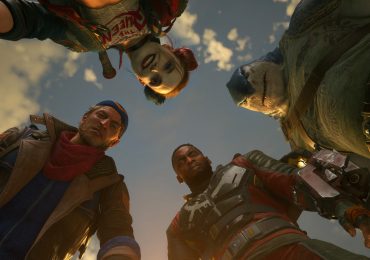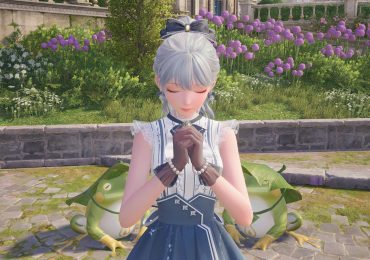Kim Kardashian was already more than a household name in 2013. The Kardashian name (hers, specifically) was equivalent with “celebrity” — or “notoriety,” depending on who was saying it. But there was one more step toward international fame that she wasn’t so sure about: whether she wanted to become a video game character.
Niccolo de Masi, the CEO of Glu Mobile at the time, first approached Kardashian in early 2013 with the idea of starring in a video game. Kardashian took several months to think through the idea. In their second meeting, de Masi showed Kardashian the game’s art — and that was it.
“Nothing grabbed or hooked her as much as seeing what she would look like as a real-life video game” character, he said. The concept he pitched was a good fit, too. The game that would become Kim Kardashian: Hollywood was all about giving players a chance to literally mimic Kardashian’s ascent to mega-fame. And it probably didn’t hurt that her new husband seemed just as fascinated by the idea. “As Kanye used to say to me, ‘Niccolo, my wife is a real-life video game character,’” de Masi said.
Given the Kardashian notoriety, KKH was immediately thrust into the spotlight when it was released in June 2014. Mere months before its debut, Kardashian surpassed 20 million followers on Twitter. Her tweets about KKH meant an instant rush of downloads, so much so that the game would suddenly go down for a few hours, according to Chris Akhavan, Glu Mobile’s chief revenue officer at the time. “It was the worst feeling, because you have this megahit and it literally just stops working,” he said. “The amount of stress that was created for the team was tremendous.”
That stress led to huge success. In its first two years, KKH generated $160 million in revenue for Glu Mobile. The game continued to receive updates over the years — all the way until April 8, 2024, when Glu Mobile took it offline for good. It’s now hidden away on some Electronic Arts server, unavailable to the public.
EA had acquired Glu Mobile in 2021 for $2.4 billion. Three years later, the publishing giant laid off hundreds of staff and announced that it was shutting down several of its mobile titles, including KKH. (Neither Glu Mobile nor Electronic Arts responded to multiple requests for comment.) The early 2024 announcement allowed KKH players several months to prepare, and gave the team at Glu Mobile the same period to wind down a game that was 10 years in the making.
Kardashian declined to be interviewed for this story, but a representative pointed Polygon toward a statement she made in January. “I’m so grateful from the bottom of my heart to everyone who has loved and played Kim Kardashian: Hollywood in the past 10 years,” she wrote. “This journey has meant so much to me, but I’ve realized that it’s time to focus that energy into other passions. I want to thank the Glu team and the many people behind the scenes who have worked diligently on making it a success. I will be forever inspired by this community that we built together.”
From stardom to Hollywood
Before KKH, there was Stardom: The A-List and its sequel, Stardom: Hollywood. Released in 2011 and 2013, respectively, the two free-to-play games were modest successes, but Glu Mobile believed that it could push the idea further. Stardom: Hollywood is essentially the basis of what KKH was built upon; the developers pulled its art style, closet, and robust systems into the celebrity-backed project. Kardashian was an obvious pick for a star to lead the game: Not only was she mega-famous and continuing to rise, but her life revolved around media — on red carpets, social platforms, and her hit reality TV show, Keeping Up with the Kardashians.
“If you really want to talk about where the essence of KKH comes from, you have to look at the first Stardom game, when we were Blammo Games,” said Danny Zabbal, one of several Glu Mobile employees who saw things through from the beginning. (Blammo Games was acquired by Glu Mobile in 2011.) Zabbal was brought on to Blammo Games to help build what would become Stardom: The A-List by Laura Zajacz, who was art director at the time, and later the creative director of Glu Mobile.
The pitch for Stardom: The A-List was that it was a fashion game that didn’t take itself too seriously. More importantly, it had a customizable avatar with tons of clothing and accessory options.
“I don’t want to toot my own horn, but in 2011 it was kind of a big deal to have a character that was totally customizable,” Zabbal said. “I think Skyrim had just come out, and we were blown away by the options. In those days, it was a really big deal to have this character that could sing and dance and check her nails and do all this stuff. She could wear a hoodie or a pillbox hat or stilettos.”
Zabbal blasted out a prototype in roughly a week, a version of the rig that would later be integrated into KKH. “By the time I left the studio, it was version 67 or something like that. It had been iterated and modified and added to and expanded throughout the entire life cycle of the studio. I’m pretty proud of that. That’s really where my contribution begins: I made the damn rig.”
In the early stages of KKH, it was Zajacz, again, who pulled Zabbal in alongside another artist, Stephen Headley. “She pulled us into the parking lot, and I was a smoker at the time, so I immediately lit up a cigarette,” Zabbal said. “We did some logistics there in the parking lot, and she was like, ‘Go team, go.’”
That afternoon, Zabbal said, they worked on concept art. Headley drew Kardashian, and Zabbal illustrated a background, like Beverly Hills — “a postcard for the location,” which he described as not necessarily accurate, but a “lovely broad impression with a tight, cool palette.”
This early art — Headley’s depiction of Kardashian — was what hooked Kardashian herself. “Kim said many times, ‘I saw that they really got me when I saw how they drew me,’” de Masi said.
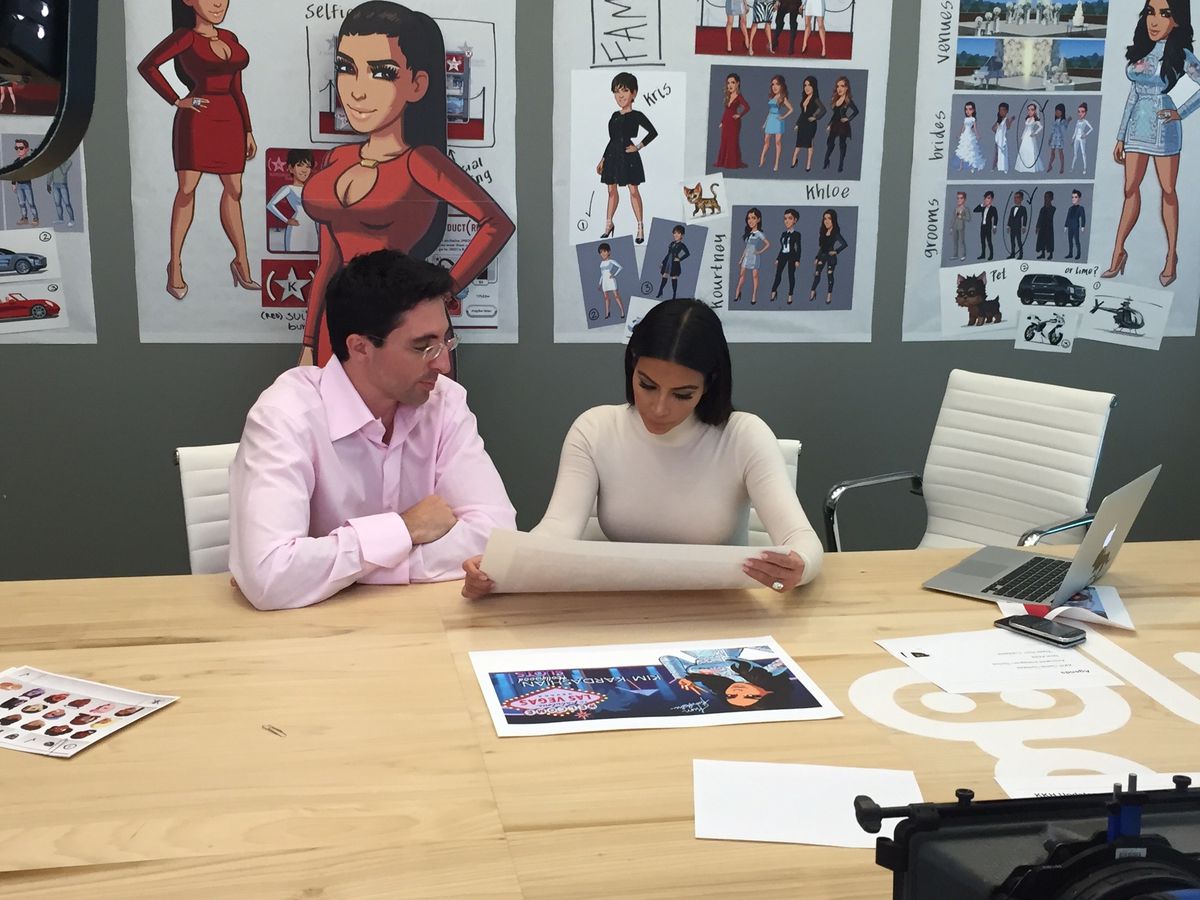
Kardashian, of course, did not have her own desk at the Glu Mobile offices, but she did stop by the San Francisco location occasionally — one visit of which was featured in Keeping Up with the Kardashians’ 10th season. Several developers who worked on the game said the working relationship with the reality superstar was as smooth as it looked on the show. Kardashian understood, the developers said, that the people at Glu Mobile were the experts, and she let them work their magic, whether that was related to the sorts of shoes that in-game Kim wore or the systems in the game.
Kardashian also recorded hours and hours of voice lines for the game. KKH sound designer Aaron Tsang said Kardashian didn’t actually go into a studio to do it; she recorded her lines in massive, hourslong takes using equipment sent from Glu Mobile. Tsang was responsible for cutting and labeling these lines so they could get added into the game. “It was an eye-watering amount of editing,” he said. The team just left the mic running; Kardashian recorded the prewritten lines, but also some improv, making sure she sounded enough like herself.
Di Dan, a senior systems designer on KKH, said Kardashian was very easy to work with compared to other creative partners he’d encountered. “I didn’t interact with her personally, but we’d send her builds, and she or her people would send feedback to us,” he said. Zabbal added that he encountered very little resistance on the art side, just “manageable” feedback.
The team working on KKH was small at the start, because the “blueprint” of the game — the Stardom series — was already there, Dan said. The team wasn’t necessarily invested in Kardashian’s show or life; many of them said that after starting on the project, they began watching a lot of Keeping Up with the Kardashians to learn about her world. Though not everyone expressed fondness for the development period in interviews with Polygon, lots of people did. Sure, the game was based on a person who could be polarizing, but it was a legitimately good game.
“I’m not going to say we were ridiculed in the studio, but a lot of people — mostly men — don’t necessarily sign up to be a game developer on the Kim Kardashian game,” Zabbal said. “There were jabs at our expense.”
Dan added that he saw his own distance from the subject as actually being a good thing for development. He might not have been the expected audience, but he and the team respected the audience that the game was meant for. “That maybe actually made it easier,” Dan said. “Because when you’re working on something you absolutely love — like, if I was working on World of Warcraft back in the day, I would have had stronger personal opinions, which would make it harder for me to see the broader player perspective.”
Kardashian-as-a-service
Kim Kardashian: Hollywood was not the first game to operate under the games-as-a-service model, but it was nonetheless an early example — perhaps before the term had even been coined. Games like World of Warcraft had been providing meaningful content updates and live operations for some time, but mobile games of the era were focused on smaller updates and on microtransactions.
“Back then, there was a lot more to figure out, because it was much newer,” Dan said. Part of that was the pace of updates. Akhavan said he underestimated the speed at which players would blast through content. “We were like, Oh my god, we’re going to have to figure out how to create content 100 times faster than we thought we would have to,” Akhavan said. “From both the perspective of scalability and making sure the game was up and running and operational, and then from a live operations and content perspective, the game was totally transformative for us.”
Andrew den Hertog, a game server engineer at Glu Mobile, helped with KKH’s live operations and back-end services to keep the game up and running — a big task for his first video game industry gig, he said, where he had to regularly support 100,000 concurrent users. “[KK:H] shaped how LiveOps [were] deployed by other apps,” den Hertog said. “The ability to release content without releasing updates to the app store was quite powerful, and I believe KK:H was one of the first apps that really capitalized on this.”
The development team had already been supporting the Stardom games for a while, but KKH’s success meant the pace of updates had to increase. The game launched in 2014 with a considerable amount of content extended by time restrictions — if you weren’t spending money, KKH cost time. But the nature of the game meant that there wasn’t really an end. Sure, you could reach the A-list, but the game forced you to keep playing to maintain your status there. Glu Mobile added new content consistently; the general types of updates spanned storylines and quests, clothing options, and systems. It was often grueling for the team to keep up with the Kardashians. The Kardashian tie-in — the fact that KKH was a game based on a real person’s life — meant that Glu could take inspiration from the show or from Kardashian’s life for updates. You’d frequently see Kardashian wearing something in real life, then see it added to the game.
Donny Meloche is one of several artists on KKH who, when he first started at Glu Mobile, largely worked on the game’s clothing. “All the research started from Kim,” Meloche said. “When the game first started, the way she styled herself and dressed — even just pop culture in general — was very different. The game and our research reflected her own fashion evolution, in a sense.”
Narrative designer Josh Labelle, who came onto the team ahead of KKH’s pandemic resurgence, told Polygon that the art, in all its locations and clothing, was a huge part of the game’s success. “We would have showcases to look at all of the new outfits that were added, and my eyes would be watery every time looking at the creativity that the team brought to it,” Labelle said. He pointed to the dress that the player’s in-game manager, the very serious Simon, wore when he debuted as a drag queen named Miss Managed. “When we first created that dress Simon wore, our lead artist [Meloche] spent, like, three days doing all the stoning on the dress.”
The clothing options eventually expanded into branded collaborations with the likes of Karl Lagerfeld and Roberto Cavalli, not only with re-creations of their clothes and accessories, but by building their brands into the storyline, too. Alanna Anderson, Glu Mobile’s head of brand partnerships at the time, said that brands were excited to try something new with KKH. “[Roberto Cavalli] actually launched a Viper sneaker in Kim’s game first,” she said. “There were only 60 available worldwide, and we sold out of that in under three hours.”
“Even just pop culture references — I remember the day ‘The Dress,’ the blue and gold dress, went viral, and they immediately put it into the game,” said Lián Amaris, former Glu Mobile director of content and community, to Polygon. “A big part of the magic was that it felt like you were involved in something that was bigger than the game.”
Some of these clothing options were available to players for free, by earning one of several different in-game currencies. Dan, who worked on the game’s economy, told Polygon that Glu Mobile was always eyeing what players wanted, trying to predict whether they’d be willing to pay for something. He pointed to one scenario in which the audience surprised him: “There are questions like, ‘We have an animated purse that has a chihuahua in it, and an animated purse that has a kitten in it. Which do players want more?’” he said. “I thought it was chihuahuas, because back in that time, Paris Hilton was more relevant, and she was walking around with chihuahuas all the time.” The answer, though, was that people wanted the cats.
Even more remarkable is that the team had to work within a restrictive, outdated system that had been in place since the Stardom franchise. “[KKH] was so far beyond the point — we’re not going to put it in new software; we’ve just got to keep it as is,” Meloche said. “The whole team was really able to innovate using outdated technology and still make it look incredibly current and relevant and exciting for people, even though we were super limited with what we could change.”
Meloche and Glu Mobile user experience designer Ravi Aujla both brought up a lack of body diversity in KKH, something that was a pain point for the community at times. Even adding gloves or a more intricate hairstyle was difficult. “Anytime you had to do that, it could potentially break the game when adding layers into Flash,” Meloche said. Aujla said the Electronic Arts acquisition was helpful in figuring out certain problems, like how to add better, more diverse skin tones with makeup that worked correctly on different skin. The Sims 4 improved its skin tone options, and Aujla said the KKH team could look to Maxis to figure it all out. That skill sharing happened in reverse, too, he said — that Maxis looked at KKH’s wardrobe for inspiration and ideation.
Narratively, Labelle said he looked at KKH as an evolution of the soap opera. Instead of doing huge drops with a bunch of content to blast through, Glu turned more to daily experiences meant to be played in small doses as KKH evolved. “We would bring a cliffhanger approach to it, where at the end of each day, there would be a ‘tune in tomorrow’ message,” said Labelle, speaking of the team’s pandemic-era strategy. “We were all in a similar situation to what everybody else in the world was, and there was really this feeling of, Let’s bring people something exciting to look forward to every single day with a little piece of story.”
The real star wasn’t Kim — it was the player
The free-to-play mobile game bore the name of a reality TV superstar and billionaire businesswoman, but KKH was actually more about the player: You started as an E-list nobody in Los Angeles, and you were befriended by Kardashian on your ascent to A-list stardom. To get there, you had to work — book modeling gigs and acting jobs, show your face at the clubs, and date around. You’d buy homes and businesses, adopt pets, get married, and even have kids, if you pleased. As in other mobile games, the gameplay mostly consisted of swiping and tapping: tap to talk to Kardashian, tap to fix your makeup, tap to pose for a photoshoot, tap to flirt with the bartender, and tap to collect money and points. It wasn’t necessarily groundbreaking for KKH to be designed around making the player feel like the real star. What did make the game unusual among other wildly popular games was who it presumed that player to be: a person who likes girly stuff.
It may seem tempting to write off a game like KKH, one that’s seemingly centered on the frivolity of capitalistic celebrity culture. And at the time, a lot of mainstream media did write it off. Because of the Kardashian name, KKH was immediately thrust into the mainstream, something that was quite rare for a casual, free-to-play game, especially one targeted at the largely ignored female gaming market.
“When it first came out, there was a weird mix of derision and obsession that seemed to be happening simultaneously,” Shira Chess, author and associate professor of entertainment and media studies at the University of Georgia, told Polygon. Stephen Colbert infamously parodied the app, its business model, and Kardashian (lots of but what does she do?s) with his own mock game called Stephen Colbert: I’d Tap That! Meanwhile, the mainstream business press balked at the $200 million that KKH was expected to bring in during its first year — not necessarily questioning how a game could make that much money, but how this game could.
Yet plenty of people who actually played KKH found it to be “legitimately good.” Not only did it have a fun gameplay loop and an impressive character customization menu, but it was largely self-aware; the developers created a game that was an intentional parody of celebrity culture. It was complex and genuinely engaging while also trying to extract something from the player, be it money or time. KKH both pushed away from and engaged with stereotypes of women, at once proving there was a market for “girl games” while also being stereotypically girly and pushing a beauty ideal.
“At its core, the idea of games starting to be designed for audiences that weren’t white dudes in the 2010s was itself a move towards trying to think about games that could be other,” Chess said. “I wouldn’t say it’s exactly feminist design, but it certainly changed how people were thinking about games.”
Chess continued: “On the other hand, bodies were very limited to specific shapes and sizes. We were playing these games that centered materialism as the core purpose of being.” Chess said that games designed for women typically have one of a few things: some sort of emotional labor, time as labor, a consumerist pull, or a way to customize an avatar. KKH had all of them — and it worked.
It all worked because every decision felt like it made sense, both in terms of gameplay and within the KKH world. For a game about a social media superstar, KKH’s implementation of tapping the screen felt like an obvious gameplay mechanic because of Kardashian’s social media fame and because the game often had you doing simple tasks in order to raise your clout. The time-based restrictions also made sense — yes, they were a play for player retention, but they often created some tension for the game, too. Early on, you were often waiting for your manager to give you a call with news: Did you get the gig? KKH actually made you wait for that call.
Amaris, in charge of social media and community, added that KKH’s social media integration was intrinsic to the spirit of the game and its fan base. “It was a built-in viral mechanism,” she said, and one of the ways in which KKH influenced the industry. It may not have been the first game to incorporate concepts like letting players assemble scenes in a photo booth, but its overall design had a major impact. “The rebranding of oneself in the style of a fandom is something that the game really pioneered digitally,” said Amaris. “The ease of that digital avatar being shared, and being this other version of yourself, was an incredible driver of the community and its success.”
There was a lot of KKH that was clunky, or a little haphazard, Chess said. But there was a magic to the game and its little moments. “It’s a little burst of play that you get to fit into your life,” Chess said. You could look at the way it was designed as sexist — based on an assumption that women don’t have the interest or time to play games — but you can also see it as designed for a greater variety of people, such as parents, who don’t have much time for play. “It’s opening a space where people are like, Oh, actually, I think I do like video games,” Chess added.
KKH made investors take a more serious look at casual video games, which are often marketed toward women, because the genre was suddenly seen as a huge moneymaker. KKH wasn’t the only game that influenced this, but it was a major player in that movement. Indeed, the success of KKH and other casual titles was key in the rapid expansion of the mobile game industry; according to data from Pelham Smithers, a market research firm, mobile gaming has kept growing each year, leading to its revenue making up more than half the overall gaming industry’s total since 2019. The mobile game market, despite being underrepresented in media coverage, dominates when it comes to money made.
A lasting legacy
As soon as the game’s shutdown was announced in early 2024, Kim Kardashian: Hollywood players began to prepare. By the time the last day arrived, they had finished scouring their closets for their finest black clothing — after all, there was a funeral to be held. On forums and social media, and in Facebook groups, players took to the runway one last time. “Leave looking snatched,” one forum user wrote, commenting on a bedazzled black gown that cuts right in at the waist. “Slaying at the funeral, but mad about it,” another wrote, alongside a screenshot of her tattooed doll dressed in a Victorian-era dress overlaid with black lace. If the girls were going out, they were doing it in style — a dramatic, flowing veil on their heads; a bouquet of dried black roses in their hands; and thigh-high platform boots on their feet.
Though several KKH players on the forums attempted to manifest the continuation of the servers, the game did indeed go offline on April 8, ending its nearly 10-year lifespan. The breadth of style on display during the game’s “funeral” is a testament to that legacy; there were thousands of pieces of clothing and accessories that players had spent just shy of a decade acquiring.
Interest in the game had died down as the years went on, but KKH saw a resurgence during the pandemic, when people started to revisit their favorite game experiences. But now it’s gone, except for the YouTube Let’s Plays and photobooth Twitter posts. It’s not an experience unique to KKH, either, and the industry is still grappling with how to preserve online experiences like this.
“When something like Kim Kardashian: Hollywood shuts down, it only ever can live on in memory, because it’s not something that, 20 years later, people will play again,” Chess said. “It speaks to how the industry thinks of AAA games versus casuals — that it doesn’t matter, because there’ll be another casual [game] in a few weeks that takes over everybody’s hearts and minds. But it did once take over people’s hearts and minds. And now it’s nowhere.”
The shutdown of KKH feels like when your favorite TV show goes off the air, but almost worse: You can still watch reruns of the show, but that’s not the case with a game like KKH. For the community, it’s been hard to find something to replace the experience. There are plenty of other fashion games, but nothing that checks all of KKH’s boxes. Some players refuse to delete the app, hoping for a miracle that one day it’ll come back online.
That’s unlikely, and so, in forums and Facebook groups, players are relegated to reliving their memories. And the game’s developers still have that, too.
“Now I have this weird thing in my life where, when I die, at my funeral, someone is going to give a eulogy and they’re going to mention Kim Kardashian,” Zabbal said. “That’s going to be so bizarre.”
